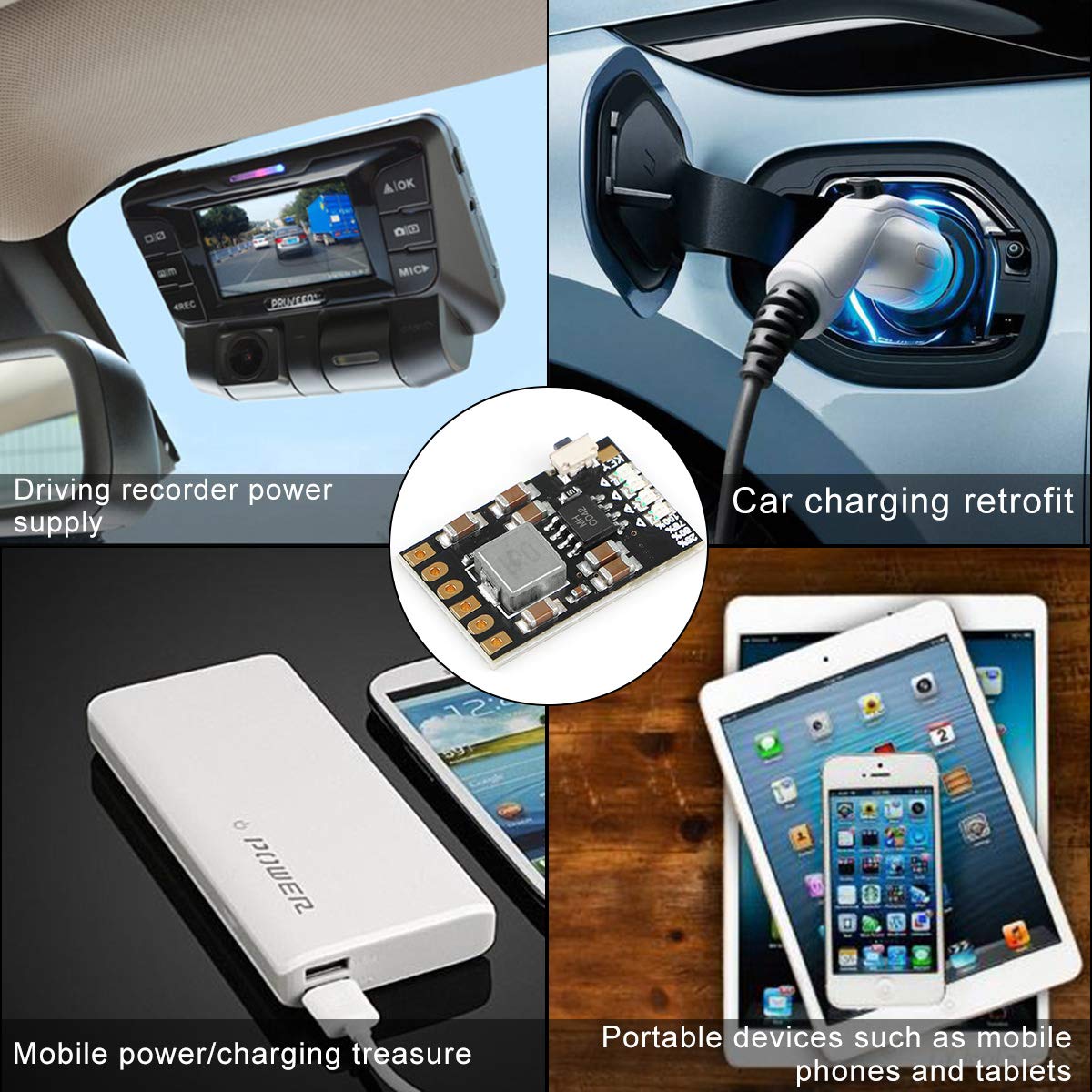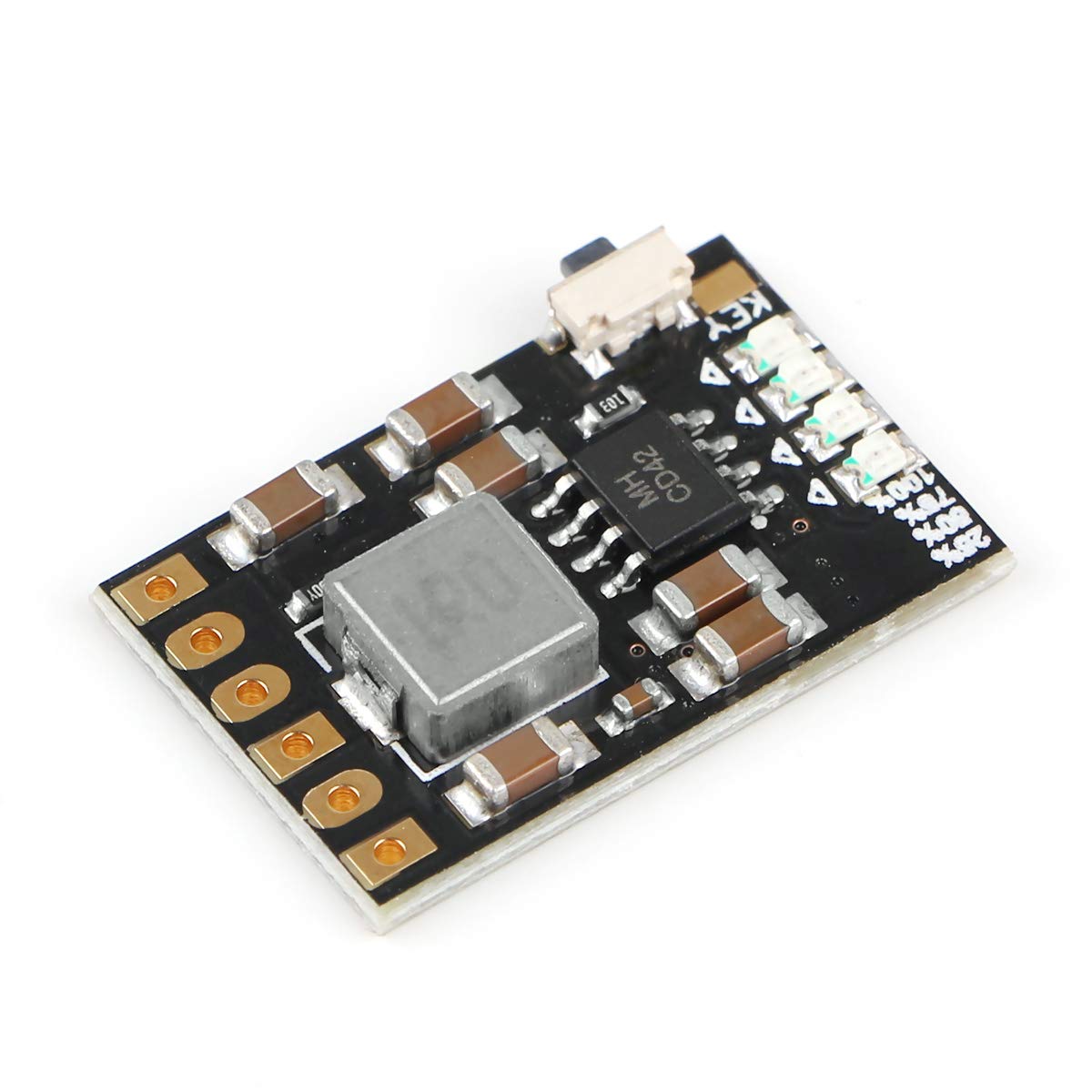Kundendienst
Copyright © 2025 Desertcart Holdings Limited
Desert Online General Trading LLC
Dubai, United Arab Emirates










🔋 Power Up Your Projects with Confidence!
The MakerFocus 6pcs 2A 5V Charge Discharge Integrated Module is a compact and versatile solution for managing 18650 lithium batteries. With advanced safety features and smart triggering capabilities, this module ensures efficient power management for your electronic projects.
| Output Voltage | 5 Volts |
| Input Voltage | 5 Volts |
| Item Dimensions | 0.98 x 0.63 x 0.39 inches |
| Color | As Shown |
R**N
Great for some but not for all.
The bad: It says 2.1A output current but I tested two of them and got ~250mA and other things you might not like is the four LEDs are on while charging and discharging (not good for low power circuits but good for showing remaining power) and the output is on (with no way to turn off) while charging.The good: The output voltage is a solid 5V and while pulling the max I got of ~250mA the voltage only dropped to 4.89V. You can take all the LEDs off without affecting the circuit or just leave the one "100%" marked one and it'll only turn on when fully charged. The form factor is great and the gold contacts are cool.TLDR: Not the best for higher current projects 250mA+ or low current projects under ~5mA!All numbers were my results, yours may differ. I like it.
R**E
Works great for charging, not so much for discharge
I've seen many people complain about the 20-30 second shut off that occurs during low current. Personally I was able to resolve this issue by jumping a 100ohm resistor across the discharge line along side my load. So far this seems to be working, will update this if something changes. I wish there were perhaps a switch on circuit that could turn on or off that feature, it works well but the automatic shut off can be troublesome.
C**F
Well made
These look nice, but I really wish it was easier to use the 5V output. Sending a signal every 5 seconds with a micro controller is a pain. I mostly just would love to find a module that can charge a lithium ion battery over micro-USB and have it also have a built in 5V regulator too. I know the Adafruit Powerboost does that, but they cost $15-$20 each. This device is so close to doing that.Edit: I found out why I had to keep activating this module to keep the power output on. This module auto detects current draw. If it is high enough it will keep the 5V output on. I was trying to keep an Arduino in a low power state then occasionally waking it up to transmit a radio signal which can draw a lot of power for a few seconds. My current draw on the Arduino was way too low so this module would shut itself off. The only way to keep it on was to send the button input on the board a low signal every so often to prevent it from turning off.I couldn’t find any detailed information on these modules, but I figured these out when I tried using them again for a portable LED project. When I woke up the module and the brightness on my LED board was high it would stay on indefinitely. If my brightness was low when it first woke up it would shut off by itself after 30-45 seconds. If it woke up on high brightness and I switched it down to low without restarting it then it would still stay on indefinitely. Kind of odd behavior, but now that I understand these modules these are great for many use cases. I love how the push button on the side acts as a power switch. Press once to wake it up and press it twice to turn it off.
D**T
Discharge mode quiescent current is 375uA, NOT 50uA!
8/823 UPDATE: Have found that if NO load is connected to module, quiescent current fluctuates between 39-64uA. So as advertised if NO load connected to Vout. Using the EN key to turn off still results in 375uA. Also found that by running Arduino (Atmega328P bare chip) on parallel circuit from battery, then it can switch the whole load from this charger/booster Vout using NPN BJT in low side. THEN the quiescent current IS around 39-64uA with load connected, but switched off by controller on parallel circuit that is NOT powered by Vout (grounds connected). Reducing controller clock speed to 8Mhz or less allows controller/arduino/MCU to operate off 3.7v Li-on battery power. So mission accomplished with this work around.Original review:First tested at 5.1v OUT with 4.0v IN from 18650 Li-on battery.I like the pin line up on one side with standard spacing. Made it MUCH easier to solder header pins on than other modules and place on breadboard.Then I removed the 4 LEDs, as this was intended for embedded battery project.V OUT powering an awake Atmega328P circuit is a great 5.1v.Trigger sleep and wake work as advertised. 2 ground taps to sleep. 1 to wake.The PROBLEM: The Discharge quiescent current (V IN from battery, V OUT to load, and triggered to shut off load) is 375uA, NOT the advertised 50uA!!! I tested on 2 of the boards using 2 DMMs.Major problem for battery projects!!! FALSE ADVERTISING FOR SUREIf only powering part of your load from this module, and you use the enable function from microprocessor through transistor or something to act as power switch, then this may still be viable, but will take more circuit work, programming and components.If the quiescent current for complete sleeping load project from battery is important, DO NOT purchase this module if that's a major consideration!!!It also would have been better with throughhole for ENable pin instead of pad. Extra hassle with pad to circuit board or breadboard placementI have not tested the charging with or without load function
C**N
Great working SMALL BMS board.
I bought these for a series of single LED flashlights Iw as building. I was looking for a small form factor when I got these, and boy it sure is small.I love the battery status LED's on the side of the board. It added functionality that I wasn't originally planning to add.My biggest problem with these boards is because they are so small. it's easy to let the smoke out while soldering the wires to the board. That issue is 100% my fault though, and wouldn't be an issue if I could have soldering the wires to this board first. But my design didn't allow that.
TrustPilot
vor 3 Wochen
vor 1 Monat